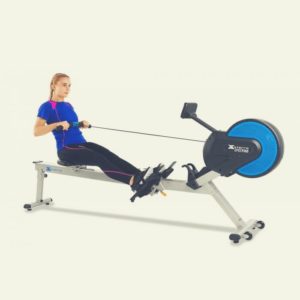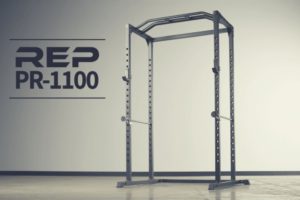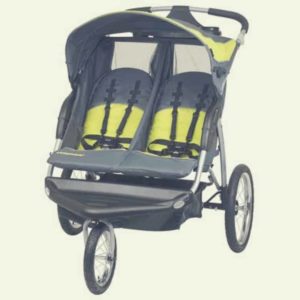
How to Measure Your Current Fitness Level
When I was fit, it was more than just fitting in my clothes. It was a feeling of being healthy, of being active.
I took a good look at myself and realized that I had lost more than just the desire to get out and be active, I had also lost a sense of the benefits of physical activity.
While it is important to take into consideration the differences in lifestyle, genetic makeup, and overall health, there are five elements of fitness that apply to everyone.
Finding out where you stand on these elements can tell you where you stand as far as your current fitness level:
Aerobic or cardiovascular endurance
This refers to your body’s ability to exercise to the point where oxygen and nutrients make their way into tissues and your bloodstream over a sustained period of time.
In other words, how long you can exercise?
Muscular strength
How strong are you? Can you lift a 50-pound bag of potting soil or do you have trouble lifting a milk jug from the refrigerator?
Muscular strength is often measured by the number of pushups you can do.
Muscular endurance
This goes beyond strength. Your muscular endurance refers to your ability to sustain repeated movement against some sort of resistance for an extended period of time.
Sit-ups are an example of muscular endurance.
Flexibility
Flexibility involves the flexibility of your lower back, the backs of your legs, and the movement in your hips.
The most common flexibility test is the ‘sit and reach’ test where you sit on the floor with your legs out in front of you and reach forward and touch your toes.
Body composition
This refers to the amount of fat you have on your body. This is most commonly measured through the Body Mass Index (BMI) which considers your age, height, and weight.
The lower your BMI, the healthier you are. BMI above 25 indicates various degrees of being overweight.
The National Institute of Health (NIH) has a standard BMI calculator and charts easily accessible.
In the spirit of preventing disease and promoting health, the US Department of Health and Human Services (HHS) has published Physical Activity Guidelines which not only provides the recommendations for physical activity for each age group, but also advises the best way to incorporate these recommendations into your life no matter what age you are.
The guidelines recommend that for an adult, 150 to 300 minutes a week of activity is considered to be healthy.
Of course, you need to take into consideration genetics and general health. If you have questions or concerns about your health, then physical activity should be discussed with your physician before beginning to exercise.

Why Should I Be Physically Active?
Physical activity can literally save your life. It is one of the most important gifts you can give yourself. We have become accustomed to sitting far too much and being unmotivated.
In other words, we’re being sedentary.
We need to get up, put down the video game controller, turn off the TV, move more, and sit less every single day.
Physical activity refers to any level of movement that results from contracting your skeletal muscles.
It is exercise that is planned, repetitive, follows some sort of structure, and is pursued with the goal of improving your health.
Being physically active gives you a greater quality of life. You will find yourself happier if you are active.
You will sleep better, enjoy a more fulfilling sex life, and be in an overall better mood.
Physical activity is promoted from a very early age. It should not be a choice, but something that your body is trained to do from an early age.
By the time you reach adulthood, it should come naturally and be an integral part of your life.
If you have become too sedentary, it is time to do something about it. Get up and get moving.
What Are the Risks of Not Being Physically Active?
The main risks of not being physically active have to do with the very essence of life. The main risk is death and various conditions that can lead to an early and untimely death.
In general, if you are not physically active, you can develop or succumb to a number of health conditions or diseases.
- Diseases, including coronary artery disease, stroke, hypertension (high blood pressure), high cholesterol, obesity, type 2 diabetes, osteoporosis, and several types of cancer that can spread to multiple sites in the body including cancer of the colon, bladder, breast, esophagus, kidney, lung, and stomach.
- Conditions that restrict movement such as arthritis.
- Brain issues such as anxiety, depression, and dementia such as Alzheimer’s disease.
- Injuries resulting from falls such as hip fractures.
- Death, or as the government describes it: ‘all-cause mortality’.
The risks of not being physically active can cost you both physically and financially.
Doctor bills can add up quickly if you find yourself with one or some of the conditions described above.
What Are the Benefits of Regular Physical Activity?
The benefits of physical activity equal an increased quality of life. If you have been sedentary and begin an exercise program, you will see results almost immediately in the area of lowered blood pressure, quality of sleep, and reduction in anxiety.
Benefits of physical activity are seen throughout the human lifespan. Beginning in early childhood and continuing through old age, the need for physical activity transcends gender, race, and genetics.
Even those who are disabled or suffer from chronic conditions can benefit greatly from regular physical activity.
A great example of a true benefit of physical activity is in the case of pregnancy. Women who walk regularly during their pregnancy have lowered chance of gestational diabetes, pre-eclampsia, lowered stress, increased chances of a normal healthy delivery, and possibly shortened labor.
One key benefit of physical activity is weight management. Continued physical activity can help you maintain a healthy stable weight over time, with a reduced risk of becoming obese.
No two people are alike, and some may gain or lose weight more easily than others.
Physical activity is good for you no matter what shape or size you are, and it is never too late to start moving more.
If, however, you are struggling with your weight, you might have to try to incorporate more physical activity into your regimen.
Once you do manage to take off the weight, it is important to keep moving to keep from gaining the weight back.
Physical activity is an important part of movement. Bones, joints, and muscles can start to decline if you become too sedentary.
This decline can be slowed by continued physical activity throughout life. Vitamin D is an important component of healthy bones, and aside from diet, a good dose of sunshine can give you an additional dose towards your musculoskeletal health.
If you have already developed arthritis or other conditions associated with movement, you may find your condition ease somewhat as you move more frequently.
However, if this is the case, you need to be careful not to overdo it even though you will probably find a decrease in the progression of this condition the more you move.
It is important to keep muscles and bones in peak condition to keep your balance and avoid falls that could cause further and future injury. Healthy muscles and bones are a critical aspect of balance.
The ability to perform tasks that allow you to perform everyday activities such as stair climbing or running errands is referred to physical function.
Middle-aged adults and older adults who are physically active have a better chance to avoid the functional limitations that afflict more inactive older adults.
Physically active older people will have less chance of injuries such as a fractured hip which can ultimately present you with life-altering negative effects.
This is due to a lowered risk of falling and getting injured.
Other benefits of physical activity will be apparent in time. Once you get moving and make it a regular part of your life, you might notice an increase in social interactions with others, overall energy, and even improvement in your sex life are possible.
All of these components mean one thing: physically active people have a better quality of life overall.
Ways to Increase Regular Physical Activity
Recent studies into sedentary behavior, as mentioned in the HHS guidelines, show that the greater the time spent sitting, the higher the risks of ‘all-cause mortality.’ This risk begins to reduce this risk even if your activity level is very light.
There are four levels of physical activity and three levels of physical activity intensity. The levels of intensity are:
- Light-intensity activity. This non-sedentary behavior during waking hours that includes walking at a leisurely pace, cooking, and light housework.
- Moderate-intensity activity. This includes activities such as taking a brisk walk, raking the yard, playing doubles tennis. A brisk walk assumes that you are walking more quickly and with purpose.
- Vigorous-intensity activity. For those nonathletic types, this activity can include shoveling snow, walking upstairs carrying groceries, jogging, running, bicycling, or taking a spirited fitness class such as aerobics or spinning. Most nonathletic adults do not perform this level of intensity.
The levels of physical activity are:
- Inactive: this is considered to be nothing beyond basic movement required to accomplish daily life activities.
- Insufficiently active: involves doing some moderate activity but less than 75 minutes per week.
- Active: meeting the guidelines of 150 to 300 minutes of moderate- or vigorous- intensity activity per week.
- Highly active: exceeding 300 minutes of moderate- to vigorous-intensity exercise.
It is not healthy to attempt to do too much too soon, and if you have any questions about health issues you will want to consult your physician prior to beginning any new exercise or physical activity regimen.
Don’t be too concerned if you find yourself a little sore at first. Some of those muscles haven’t seen any sort of activity beyond getting up and down off the couch in years.
If you start to hurt beyond the factor of simple muscle soreness, stop what you are doing and consult your physician before overdoing it.
You do not want to injure yourself while trying to get back into shape as that will send you back into bad habits including a sedentary lifestyle.
You should start by just getting up and walking
Start with a 10 to 15-minute walk a few times a week and gradually increase that time.
While it is okay to start out by walking at a normal pace, you will need to increase that pace until you are putting energy into it.
Start stretching
The stretches mentioned for measuring flexibility are a good place to start. Sit on the floor with your legs out in front of you and stretch forward reaching for your toes.
This will become easier as your body becomes accustomed to the movement.
Standing stretches can also help you loosen up
Standing up straight and reaching your arms over your head then stretching to each side.
Spread your feet apart so that your feet are comfortably placed directly beneath your hips and slowly stretch forwards.
Stretching is always a good start to any physical activity as it decreases the risk of injury.
Sit-ups are another good start
These will increase the strength in your abdominal muscles and start you back on the path to muscular endurance.
You can start slow here, but you will eventually want to pick up the pace somewhat.
Get in the water
The resistance and buoyancy will help you with both cardiovascular exercise and flexibility. Start with just walking in the water and eventually move on to doing a few lazy laps in the pool.
You can always increase the number of laps you do as time goes on. Water exercise is especially effective for those who have low back pain, arthritis, or diabetes.
If you need some sort of motivation, see if one of your friends will commit to walking with you a few times a week.
Physical activity can provide you with a boost to social interaction that exceeds Facebook, texting, and the like.
If you find yourself wanting more, you can look into joining a gym or taking a fitness class. If you find yourself needing a slower stretching regimen, look into tai chi.
This slow series of stretches can be very effective, especially if you have already developed arthritis or chronic pain of some degree.
However you choose to start, any increase in physical activity is better than what you have been doing.
Final Thoughts
Some of the benefits of your new path towards getting off the couch and getting moving will be apparent pretty quickly.
You should find yourself sleeping more at night and waking up feeling rested. Your blood pressure will start going down, and you might even start losing weight.
Once you get into the habit of moving more and start to experience the benefits of physical activity, you might even find that you, the non-athlete, might want more.
You might find yourself wanting to pursue some casual sports. Your local recreation center can offer you other ideas in this regard.
The general guidelines recommended by the HHS of 150 to 300 minutes of moderate- to vigorous-intensity exercise per week are a good goal towards a healthier lifestyle.
Your body will thank you once you become accustomed to these new habits.
If the thought of a longer healthier life appeals to you, then get moving. You will feel better. Your depression will lessen. You will have less anxiety. You will be happier.
The benefits of physical activity can go far beyond just life in general. Besides, an increase in physical activity can add spark to your sex life as well.



